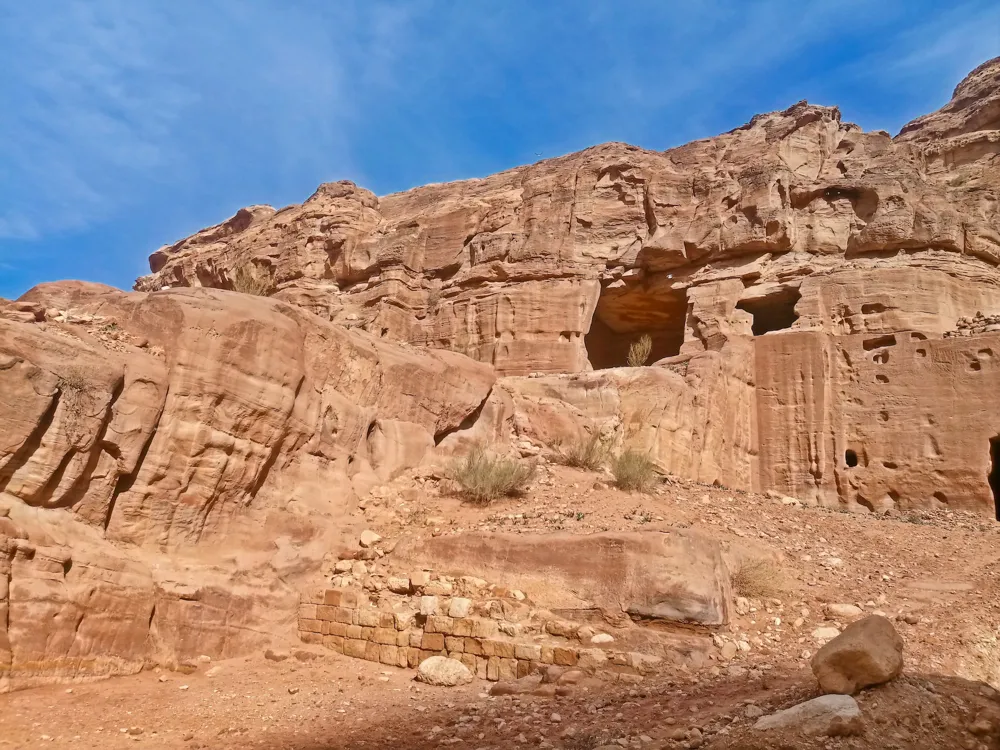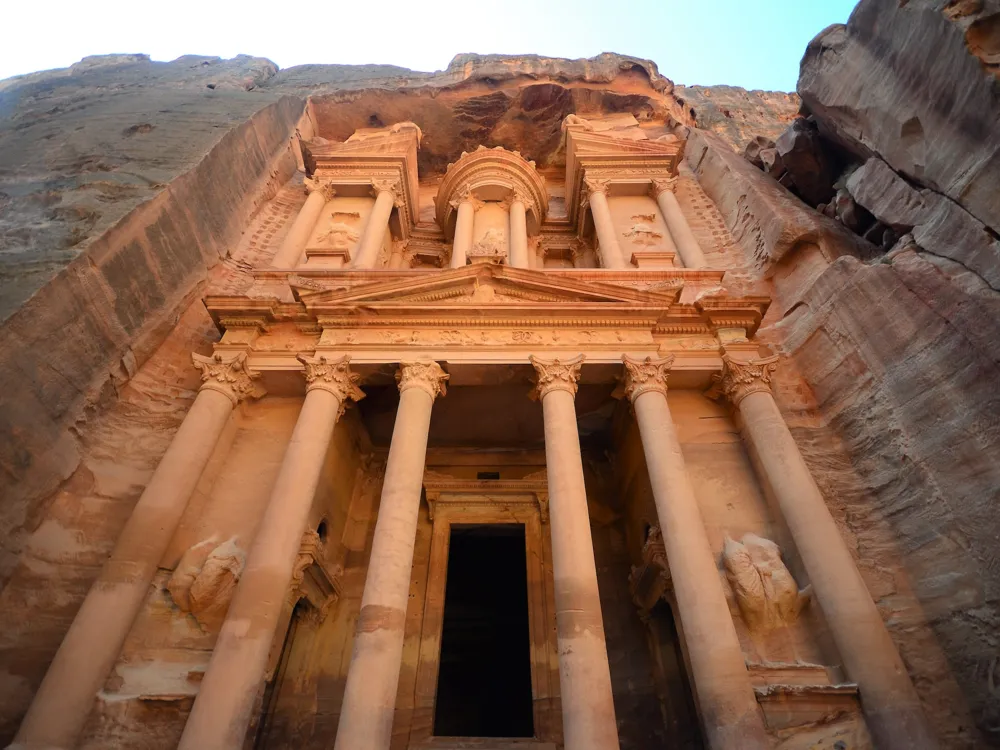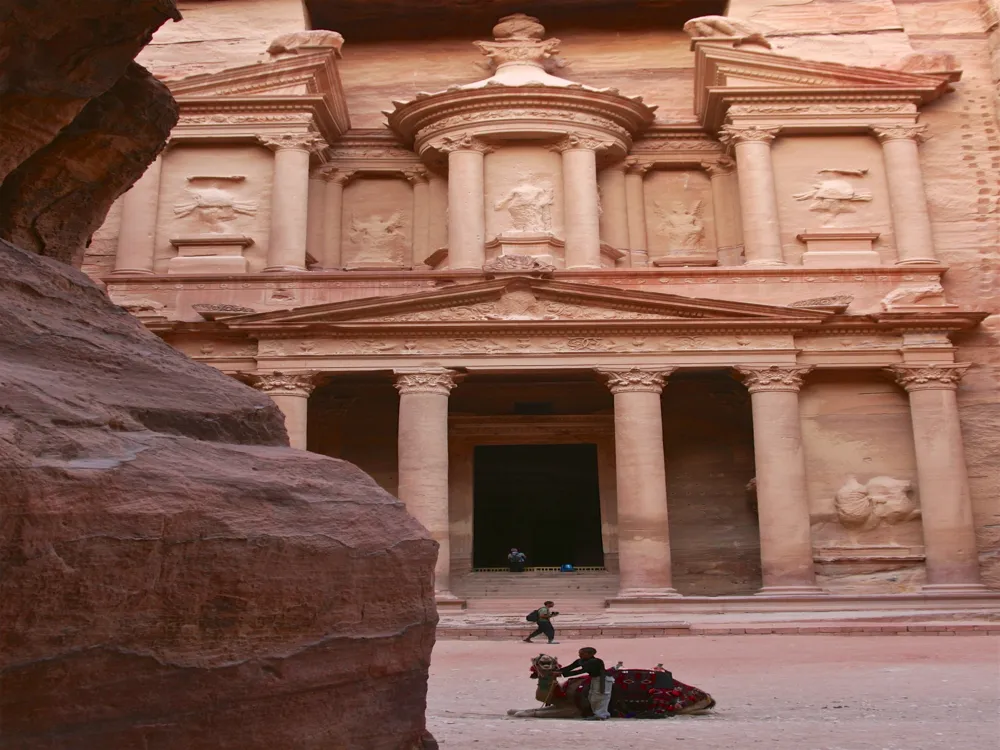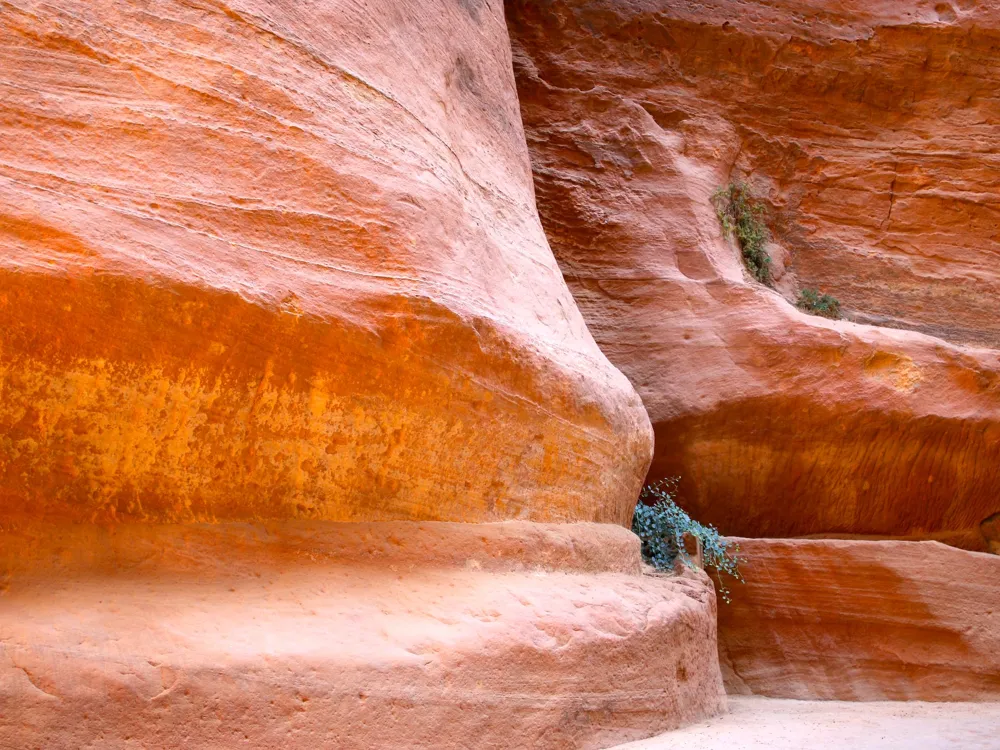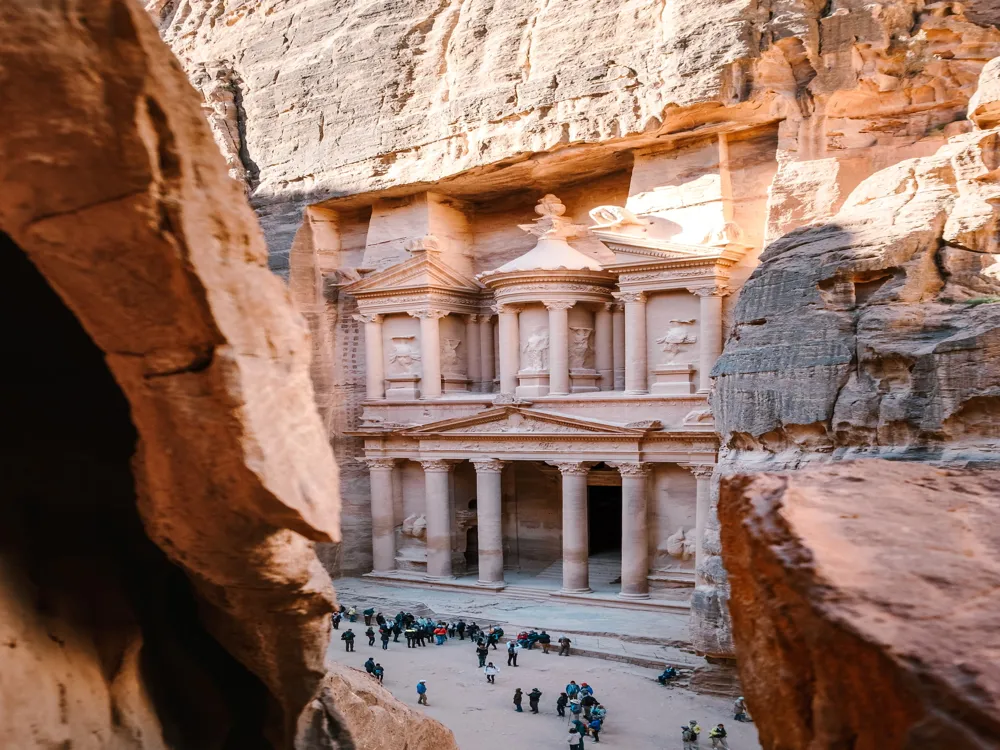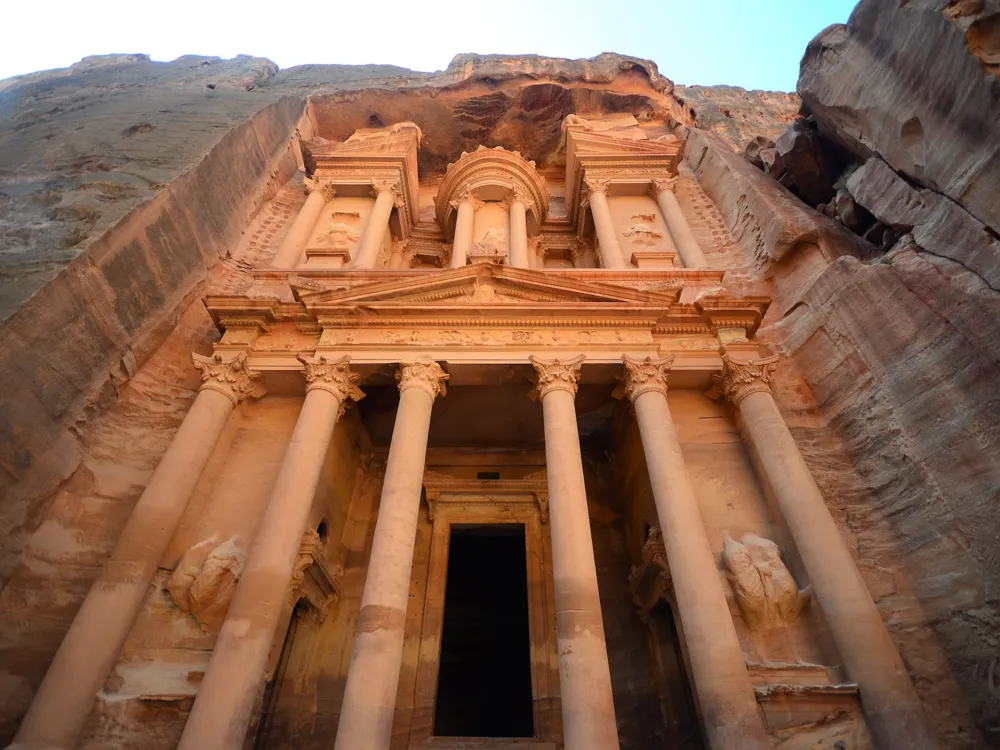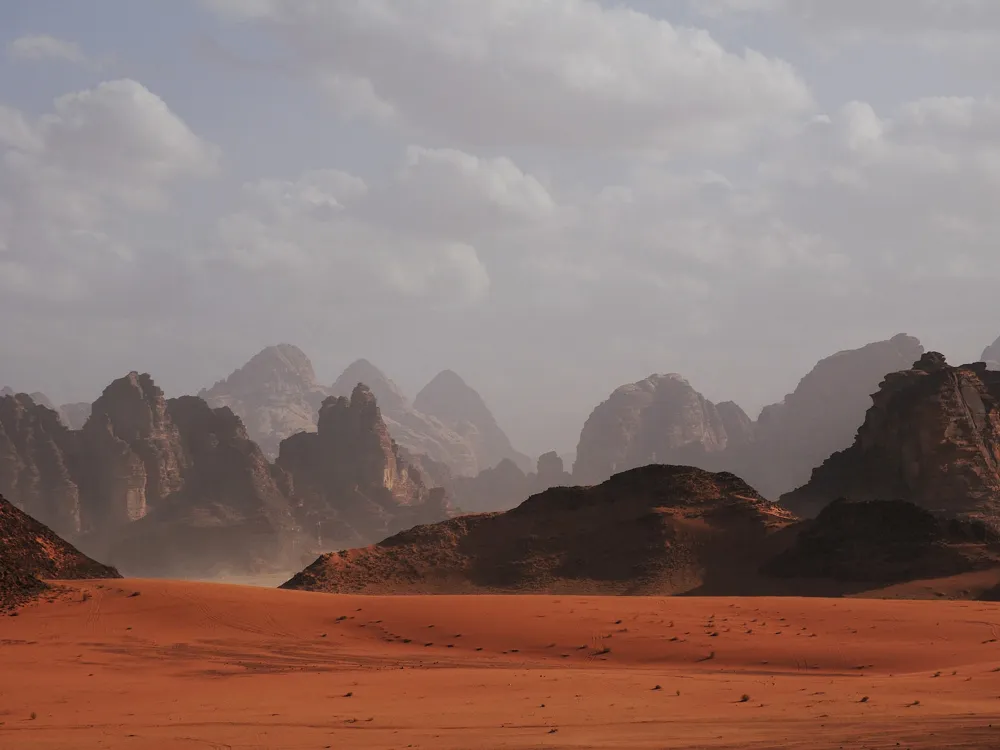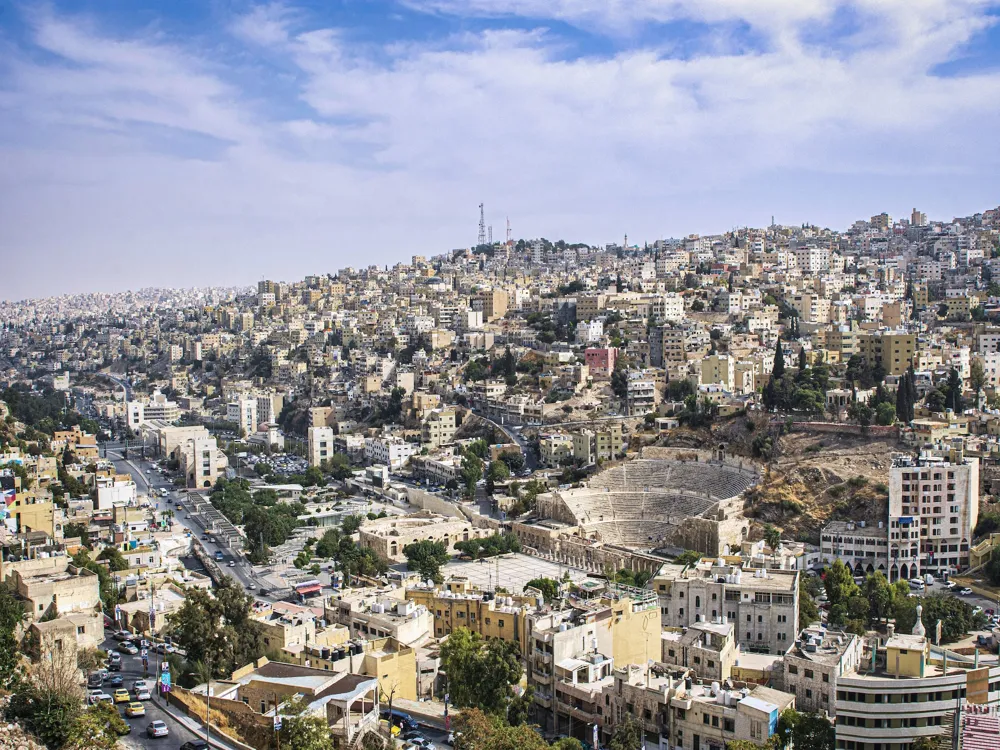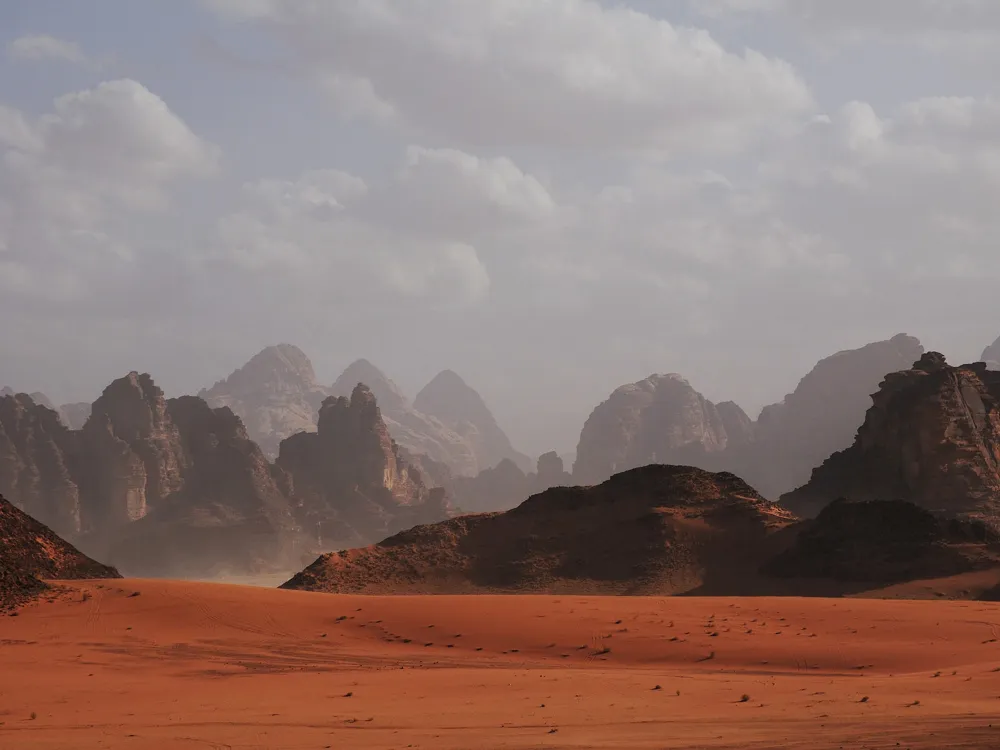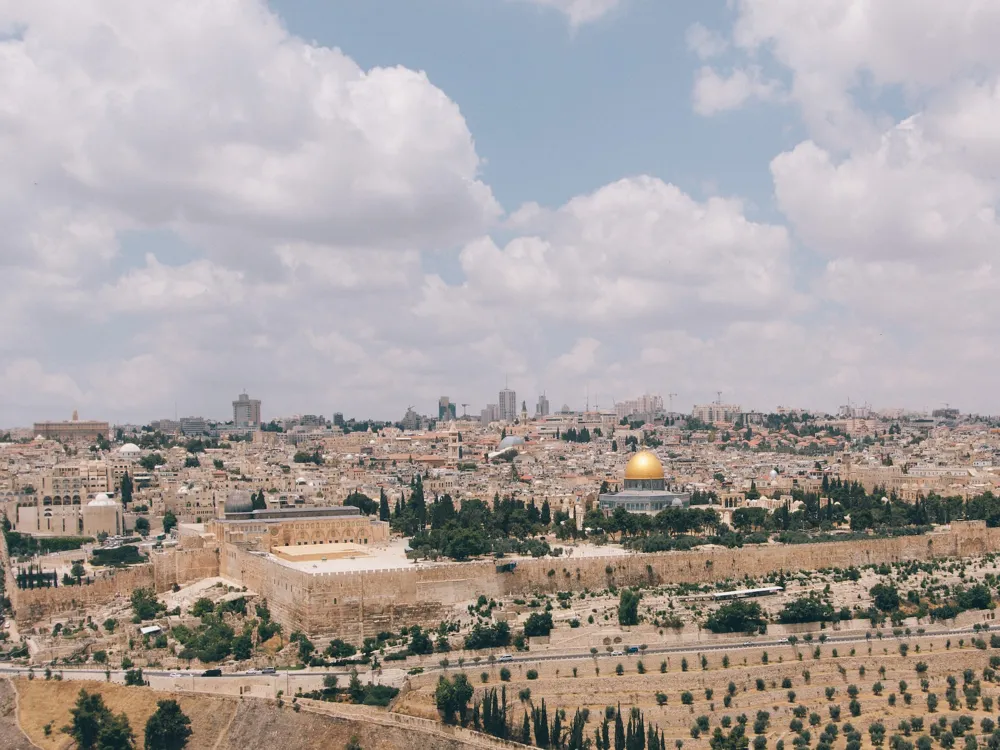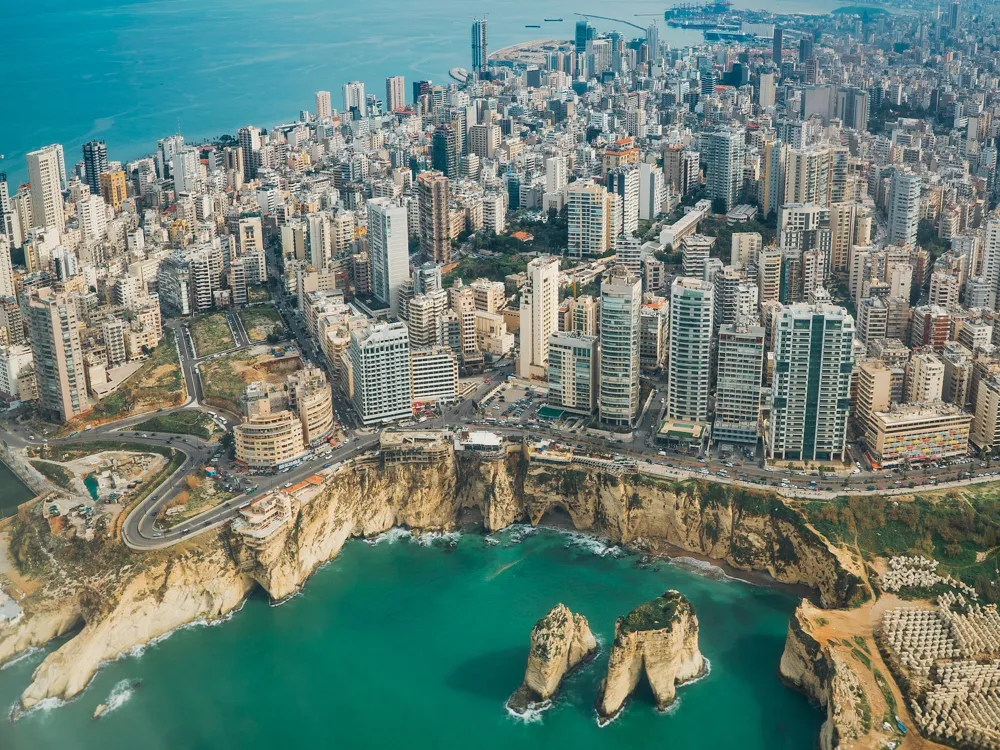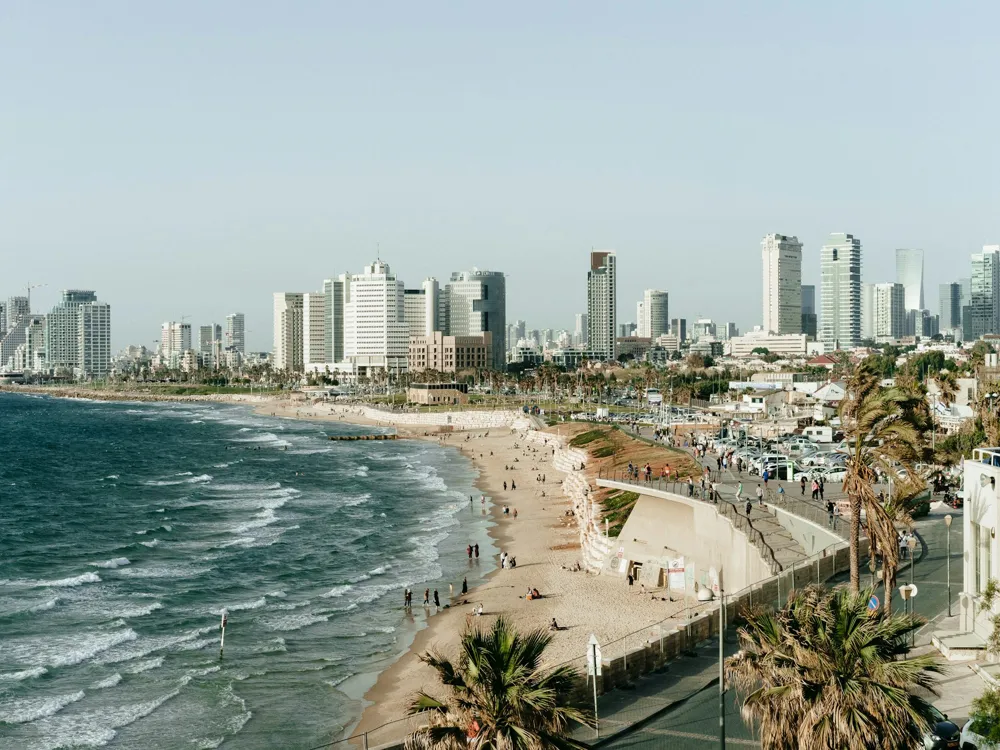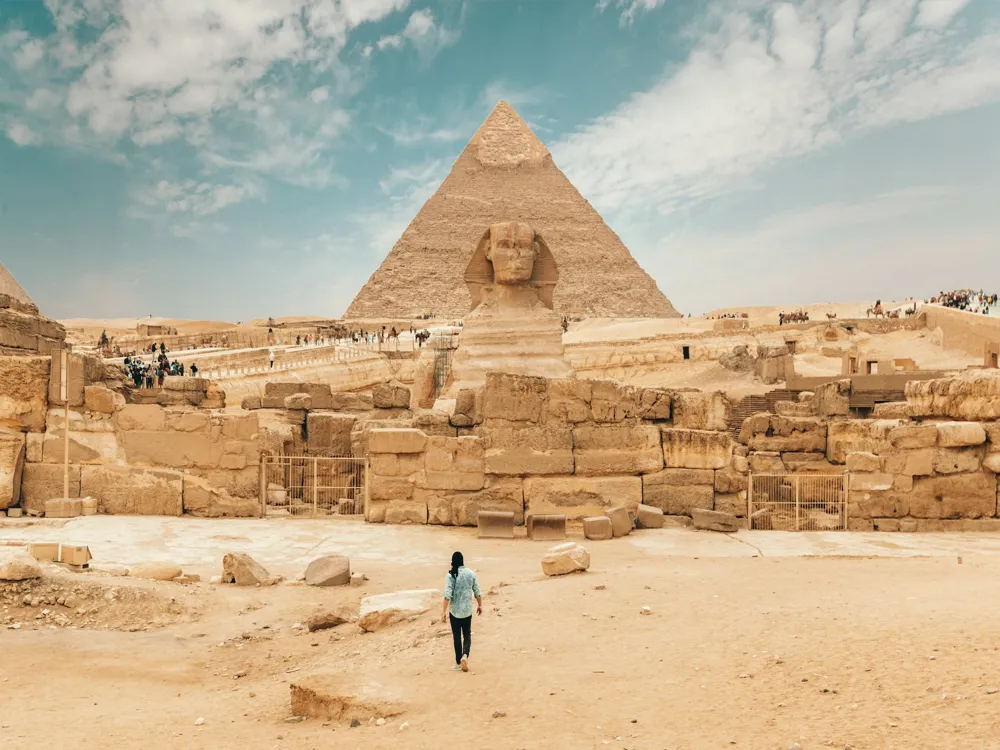The Treasury of Petra, locally known as Al-Khazneh, is one of the most magnificent and renowned archaeological sites in the world, located in the heart of the ancient Nabatean city of Petra in Jordan. This iconic monument, carved directly into the pink sandstone cliff face, dates back to the 1st century AD and is believed to have been the mausoleum of Nabatean King Aretas IV. The Treasury stands as a testament to the ingenuity and artistic skills of the Nabateans, showcasing a blend of Hellenistic architectural elements with native Eastern traditions. The structure's name, 'The Treasury,' is derived from a local legend that pirates hid their treasure in the urn atop the facade. However, this is a myth; the purpose of the Treasury remains tied to its role as a royal tomb. As visitors approach the Treasury through the Siq, a narrow gorge, they are greeted by its breathtaking facade, which is over 40 meters high and intricately decorated with Corinthian columns, friezes, and figures. This awe-inspiring monument not only reveals the architectural prowess of its creators but also provides insights into the religious and ceremonial practices of the ancient Nabateans. The architecture of The Treasury is a remarkable example of ancient Nabatean craftsmanship. The facade, carved out of a single sandstone rock face, stands at about 40 meters tall and 25 meters wide, illustrating the Nabateans' mastery in rock-cut architecture. This monumental structure is a blend of various architectural styles, primarily Hellenistic, with influences from Mesopotamian and Egyptian architecture. The Treasury's facade is divided into two levels. The lower level features six Corinthian columns flanking the entrance, each standing on a stepped base. Between these columns are figures that represent mythological gods and goddesses, hinting at the Nabatean's religious beliefs. The central doorway leads to a chamber, which is a large hall where the tomb is located. Intricate carvings, including floral motifs and figures, adorn the doorway, showcasing the artisan's attention to detail and artistry. The upper level of the facade is equally impressive. It features a large tholos - a circular structure - topped with a majestic urn, which is the focal point of many myths surrounding the Treasury. Flanking the tholos are four eagles, symbols of the Nabatean god Dushara. The combination of these elements reflects a cosmopolitan culture that was open to external influences while retaining its unique identity. The interior of the Treasury, though simpler than its elaborate exterior, holds significant importance. The large, single chamber likely served as a ceremonial hall or a royal tomb. The walls inside are plain, a stark contrast to the ornate facade, suggesting that the Nabateans placed more emphasis on the exterior's symbolism and public display. The best time to visit the Treasury is early in the morning or late in the afternoon. During these times, the sunlight illuminates the facade beautifully, enhancing its colors and carvings. Additionally, visiting during these hours helps avoid the midday crowds and the intense heat of the desert. Consider taking a guided tour to enhance your understanding of the Treasury's history and architecture. Knowledgeable guides can provide valuable insights into the site's significance, the Nabatean culture, and little-known facts about the structure. For photography enthusiasts, capturing the Treasury in the right light is crucial. Morning light offers a soft glow on the facade, ideal for photography. Also, consider different angles and viewpoints, such as from the Siq, to get unique shots of this architectural marvel. As a UNESCO World Heritage site, it's important to respect the Treasury by not touching the carvings or climbing on the structure. Preserving this ancient wonder is crucial for future generations to experience its beauty and historical significance. The Treasury of Petra is located in the southern region of Jordan and is accessible from the city of Amman or the port city of Aqaba. Visitors can travel to Petra by car, bus, or guided tour from these cities. Upon reaching Petra, the Treasury is accessed via a 1.2-kilometer walk through the Siq, a narrow gorge surrounded by towering cliffs. The walk itself is an experience, as the path leads through dramatic rock formations and ancient ruins, culminating in the stunning view of the Treasury. Read More:Overview of The Treasury of Petra
Architecture of The Treasury
Tips When Visiting The Treasury
Best Time to Visit
Guided Tours
Photography Tips
Respect the Site
How To Reach The Treasury
The Treasury
Petra
₹ 35,900 onwards
View petra Packages
Weather :
Tags : Historical Site
Timings : Monday - Saturday: 6:00 AM - 5:00 PM
Sunday: 9:00 AM - 5:00 PM
Entry Fee : Free Entry
Planning a Trip? Ask Your Question
Also Refered As:
Al-Khazneh
Petra Travel Packages
View All Packages For Petra
Top Hotel Collections for Petra

Private Pool

Luxury Hotels

5-Star Hotels

Pet Friendly
Top Hotels Near Petra
Other Top Ranking Places In Petra
View All Places To Visit In petra
View petra Packages
Weather :
Tags : Historical Site
Timings : Monday - Saturday: 6:00 AM - 5:00 PM
Sunday: 9:00 AM - 5:00 PM
Entry Fee : Free Entry
Planning a Trip? Ask Your Question
Also Refered As:
Al-Khazneh
Petra Travel Packages
View All Packages For Petra
Top Hotel Collections for Petra

Private Pool

Luxury Hotels

5-Star Hotels

Pet Friendly







